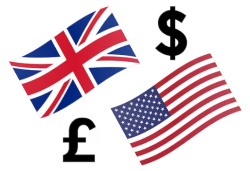
Flexity Analysis for GBPUSD
Forecast Overall(Short-Term, Long-Term): ST=Probably Up LT=Undecided
Forecast Methods(Short-Term, Long-Term):
[Method0] ST=Up LT=Same
[Method1] ST=Down LT=Down
[Method2] ST=Up LT=Up
FlexityIndicator Analysis Method(0)
Short-Term: **Answer:** The price of GBPUSD is expected to go up in the short term, with a target of 1.3636. However, if it breaches the level of 1.3518, a decline targeting that level and potentially extending further is possible. In summary: **Expected to go up.** Long-Term: The text does not provide sufficient information to predict the long-term trend of GBPUSD prices. It only offers short-term targets based on technical analysis and acknowledges influencing factors without specific details. Therefore, we cannot determine whether the price is expected to go up, down, or stay the same in the long term from the given data. **Answer:** The text does not provide enough information to predict the long-term trend of GBPUSD prices.
Result: [Method0] ST=Up LT=Same
FlexityIndicator Analysis Method(1)
Short-Term: **Answer:** The price for GBP/USD is expected to go **down** in the short term. This conclusion is drawn from several bearish indicators, including a bearish trading outlook, potential pound weakening due to Bank of England rate cuts, negative market sentiment influenced by Trump's remarks, and broader trends suggesting dollar strength despite longer-term dollar vulnerability. Long-Term: **Answer:** The price of GBPUSD is expected to go down in the long term. This conclusion is supported by multiple forecasts predicting a weaker pound due to potential Bank of England rate cuts and geopolitical factors contributing to dollar weakness, which may not offset the bearish outlook on the pound against other currencies including USD.
Result: [Method1] ST=Down LT=Down
FlexityIndicator Analysis Method(2)
Short-Term: The price for GBPUSD is expected to **go up** in the short term. This conclusion is based on a bullish outlook for GBP, its recent high of nearly $1.35 (a 13-month peak), and favorable factors such as US Dollar weakness and UK inflation data indicating economic stability. Additionally, geopolitical tensions are further weakening the dollar, increasing investor interest in GBP. Long-Term: **Analysis of GBPUSD Long-Term Outlook:** 1. **Current Factors Supporting GBP Strength:** - The British Pound (GBP) is at its highest level since 2022, around $1.35, due in part to US dollar weakness and controlled UK inflation (3.4% in May). These factors suggest potential short-term strengthening of GBPUSD. 2. **Inflation and Central Bank Policies:** - The UK's inflation rate may prompt the Bank of England (BoE) to consider raising interest rates, which could strengthen GBP further. However, high inflation can also lead to economic instability if not controlled. 3. **Uncertainty in Long-Term Projections:** - The context lacks specific long-term forecasts or price targets, indicating that while current trends are positive for GBP, future developments depend on various external factors. 4. **External Influences:** - Geopolitical events, central bank policies (e.g., Federal Reserve decisions), trade balances, and economic performances of the UK and US can impact currency values significantly. **Conclusion:** While current indicators suggest potential short-term strengthening of GBPUSD, the long-term outlook remains uncertain without additional data. Investors should monitor ongoing developments and seek comprehensive analyses to assess future trends accurately.
Result: [Method2] ST=Up LT=Up
